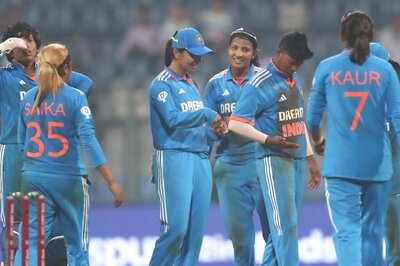
views
The Ram Temple movement propelled Atal Bihari Vajpayee and LK Advani to the helm of affairs in the Bharatiya Janata Party. The demolition of Babri Masjid in 1992, however, led to the imposition of President’s Rule in four BJP-led state governments in Madhya Pradesh, Uttar Pradesh, Rajasthan and Himachal Pradesh.
A year later, when elections to the state assemblies were called, the BJP, in its attempt to foster a second-rung leadership in the party, gave tickets to some young and some new faces. For the Bharatiya Janata Yuva Morcha or the youth wing workers of the party, all roads in that election led to one constituency in Himachal Pradesh from where its president, one Jagat Prakash Nadda, was contesting. Among those who actively campaigned in that election was a youth leader from Patna, Ravi Shankar Prasad.
Nadda’s association with Bihar goes back to his school and college days. His father was vice-chancellor of Patna University. Associated with the youth wing of the RSS, the Akhil Bharatiya Vidyarthi Parishad or the ABVP, Nadda later moved to Himachal from where he entered active politics.
Nadda was one of the youth leaders mentored by former RSS ideologue Bal Apte in the ’80s and ’90s. Those who made the cut and graduated from the ABVP to the BJP. Those who would later join the seniors’ club to give leadership to the party.
Nadda was preceded by Rajnath Singh as the BJYM president. Rajnath Singh took over the baton from Pramod Mahajan in 1988. Interestingly, the BJYM is currently led by Mahajan’s daughter and Mumbai MP Poonam Mahajan.
Nadda was succeeded by another youth leader who it made big in electoral politics - Uma Bharti. Those who preceded Nadda include Rajasthan governor Kalraj Mishra. The list of successors includes Dharmendra Pradhan, Kishan Reddy, Shivraj Singh Chauhan and Anurag Thakur.
In Nadda’s case, he remained active in state politics and became a minister in the Prem Kumar Dhumal government. The shift to national politics came in 2009 when the RSS stepped in after two consecutive defeats in national elections. The ‘D-4’ or the ‘Delhi 4’ group comprising Sushma Swaraj, Arun Jaitley, Ananth Kumar and Venkaiah Naidu was rejected to catapult an outsider in Nitin Gadkari to the president’s post.
The generational shift in the organisation was evident in Gadkari’s new team. Nadda was brought in as national general secretary. So was Dharmendra Pradhan, another former BJYM president. Bhupendra Yadav was also inducted in the national team.
When the party won a clear mandate at the Centre in 2014, Nadda’s name was doing the rounds as a possible replacement for Rajnath Singh as party president. The stellar performance in UP, however, tilted the scales in favour of Amit Shah.
Nadda was adequately compensated. He was the only second-generation leader to get a place in the Union Cabinet, in the Parliamentary Board and in the party Central Election Committee.
In 2017, it was widely expected that Nadda would return to state politics as chief minister when the BJP won clear majority in assembly elections. Former CM and BJP leader Prem Kumar Dhumal had suffered a shocking defeat at the hands of his former protégé. The party, however, chose to hand off the reins to Jairam Thakur.
Nadda, interestingly, was not inducted in Narendra Modi’s second government in 2019. Some saw it as an indication of the party preparing to hand him organisational responsibility.
A few months later he was nominated as the working president of the party. And now, three decades after he led the youth wing of the BJP, Nadda takes charge as BJP president.




















Comments
0 comment